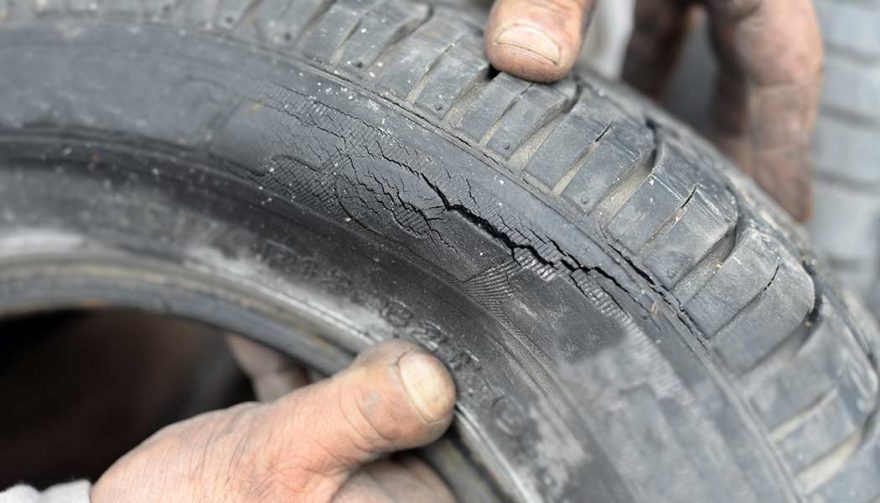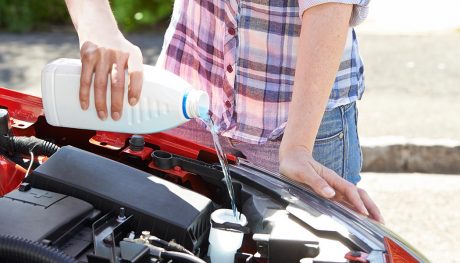
Unused tires are more prone to dry rot.
How To Prevent Dry Rot on Tires
Want to know how to prevent dry rot on tires? You probably don’t think about tire dry rot very often. You probably think dry rot is something that affects your home, but cars in your driveway and garage are at risk too.
In fact, it affects a lot of vehicle tires. The cause is essentially the same as it is for dry rot in wood. It’s caused by a fungus, and if that fungus is allowed to spread in the rubber of your tires, they can develop dry rot.
The Dirt on Tire Dry Rot
You need to know what can happen if your tires develop dry rot and how to prevent dry rot on tires. You also need to know how to identify the tell-tale signs and what you can do to prevent tire dry rot.
Read on to learn the basics of tire dry rot, and what you can do about it. Here’s what you need to know.
Tires That Aren’t Used Age More Quickly
Tires are like your physical fitness, your sex drive, and your brain. If you don’t use them, you lose them. Tire dry rot might not be much of a problem in a vehicle that’s driven regularly. In that case, it’s more likely to be ordinary wear and tear that spells the kiss of death for your tires. That’s normal and natural though.
If you don’t use your tires, though, you’re risking premature death due to dry rot. This is because tire manufacturers add compounds to tires that protect against things like ozone damage or weather cracking. These compounds, though, have to work toward the tire’s surface in order to provide protection. That means that tires need to be rolling, flexing, and heating up.
When the tires sit still, they dry out and age more quickly, particularly on the sidewalls. This is why even relatively new vehicles can end up with tires that are destroyed by UV rays and ozone.
Check Your Tires
If your car isn’t used all that often, you should make sure to check your tires for cracks before you go anywhere. Checking your tires is an essential DIY car maintenance project you should incorporate into your routine.
If the cracks are deeper than 1/16 of an inch, you need to replace the tire right away. Cracks that are under 1/32 of an inch will probably last you a while, but should be closely observed. If you’re not sure how bad the damage could be, it would be best to have the tires inspected by a professional.
Consider the Age of the Tires
If your tires are more than six years old, that indicates two things. First, that you don’t drive very much. Second, that your tires have become vulnerable to dry rot. As we’ve stated, tires that aren’t used are going to age and crack more quickly than tires that are used. Time to get them checked. Getting rid of old tires is a sure way to prevent dry rot on tires.
Determine the Age of Your Tires
Perhaps you’ve bought a used car, and you have no idea how old your tires are. They look pretty good, but you really can’t put a finger on the age. Here’s how it’s done. Every tire made in the USA has a DOT number. It may be located on either the inside or the outside sidewall. The final three or four digits tell you the age of the tire.
Older tires used three digits, with the third digit identifying the year that the tire was made, and the first two identifying the week. Newer tires use four digits, the final two indicating the year and the first two indicating the week. If you can’t find the DOT number, see a professional who can help you to identify the age of the tire.
Extend Your Tire Life
Now you know what can cause your tires to age, and how to determine the age of your tires. That’s all well and good, of course, but how do you prevent your tires from aging prematurely and how to prevent dry rot on tires? It’s as easy as other car maintenance items, like changing your spark plugs.
- Keep Your Tires Clean: The best way to do keep your tires clean is simply by using water and a gentle soap. Don’t use tire dressings. The rubber in your sidewalls contains anti-ozones and anti-oxidants that protect your tires. If you use harsh detergents, these compounds can be removed and your tires can become prematurely aged.
- Make Sure Your Tires are Properly Inflated: Always keep your tires inflated to the pressure recommended by the manufacturer. This is particularly important if your vehicle is in storage.
- Avoid Petroleum: Storing your car on asphalt or other petroleum based surfaces can be harmful, as can storing it on frozen ground.
- Keep Your Car Out of Sunlight and Heat: It’s best to store your vehicle inside, but if this is impossible, at least provide your tires with covers that are designed to block the UV rays of the sun.
- Move Your Car Every Few Months: This can help to prevent the sidewalls of your tires from cracking as a result of keeping your vehicle sitting in the same position for too long a period of time.
These tips will add a lot of life to your vehicle’s tires, and they will also help you save gas. Keep in mind, though, that exposure to the harsh elements, and the age of your tires, are going to be the leading causes of dry rot in your tires. Just like car maintenance, your tires need attention too.
Bonus Tip
Applying a tire protector at least once a month can work to protect your tires from UV rays that can cause dry rot. The best tire protectors are water-based. The instructions for application will vary somewhat from brand to brand. Generally speaking, you can use a cloth to apply most tire protectors. The main thing is to apply them regularly, and once a month is generally recommended.
Keep tires from dry rotting by following these simple steps.





